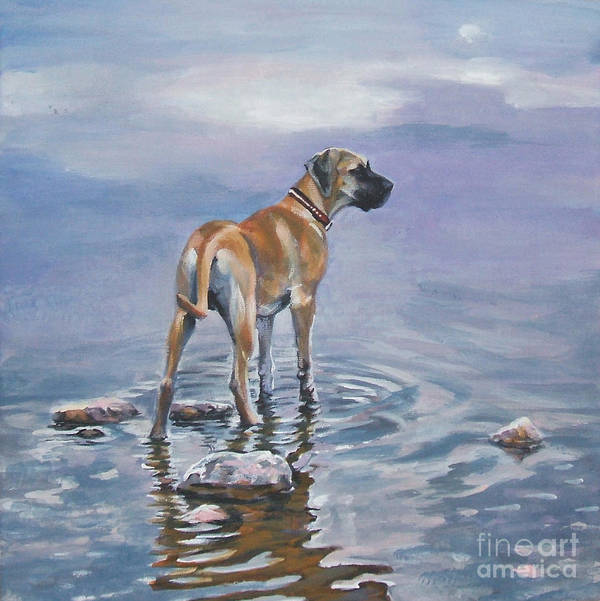
We’ve warned against “parts judging” on these pages before. By that we mean the mistake made when a breeder or judge zeroes in on one aspect of a dog’s conformation at the risk of overlooking the whole dog, and losing sight of the importance of balance.
That said, we’re about to do just that. We find it useful when explaining structure in a given breed to focus on one part of it, but ask that you never forget how vital it is to consider the entire dog.
When asked, many show judges will opine that in a working breed, the single most important aspect of a dog’s structure is the front assembly because it is what enables a dog to do the job for which it was bred. The “front” not only determines movement and endurance, but the “greatest amount of work in supporting a Great Dane falls to the forequarters which carries the body’s weight during stride, absorbs the weight as the step is completed, and provides directional thrust. Correct placement and angulation of shoulder and forearm give the dog greater reach, and the slightly sloping pastern and well cushioned pads absorb the shock as the foot hits the ground.” (from the Great Dane Illustrated Standard).
To a breeder’s lament, a good front is also the easiest part of a dog to lose, and the hardest to get back.
The Great Dane is a working breed, and though it no longer does the job it once did in Germany (hunt boars and guard estates), sound structure is no less important. The breed standard discusses the forequarters (it should be strong and muscular) and that the shoulder blade must be strong and sloping, forming, as near as possible, a right angle in its articulation with the upper arm which should be the same length as the shoulder blade.
Many people determine if a Dane has proper layback by putting their fingers on the uppermost point of the shoulder, then drawing an imaginary line perpendicular to the ground. If the dog is built right, that line should go right through the elbow of the dog, elbows that should be at the halfway point from the withers to the ground. If the line passes through the front of the leg or more, there’s an issue that could involve the shoulder layback, the length (or lack of) in the upper arms, or where the shoulder is placed (usually too far forward).
In another post, we’ll cover the Dane’s “southern end,” the rear assembly that provides the propulsion to move the body forward.
Image: Great Dane by LA Shepherd
www.facebook.com/L.A.ShepardArt
http://fineartamerica.com/profiles/lee-ann-shepard.html
www.etsy.com/shop/TheDogLover
